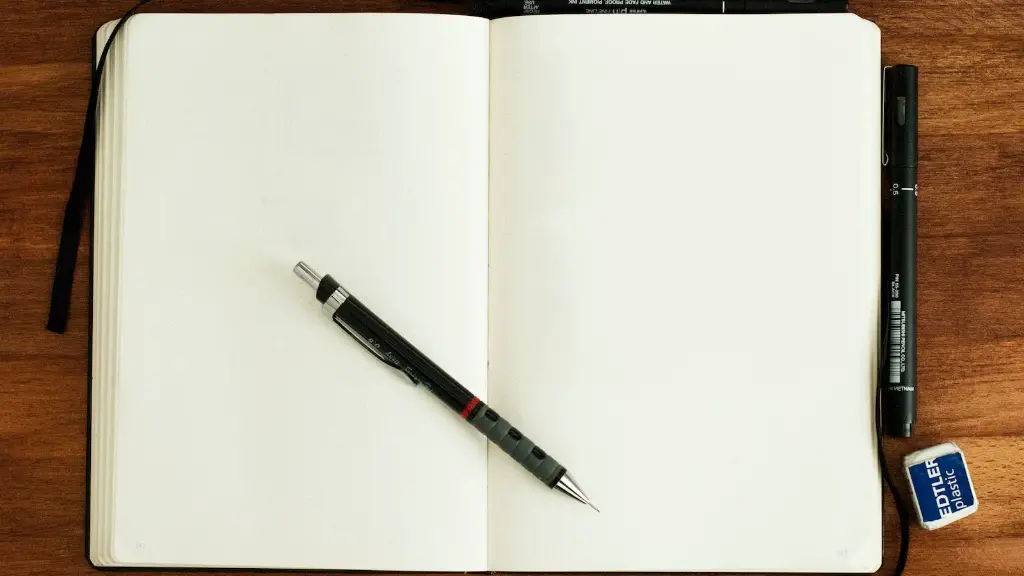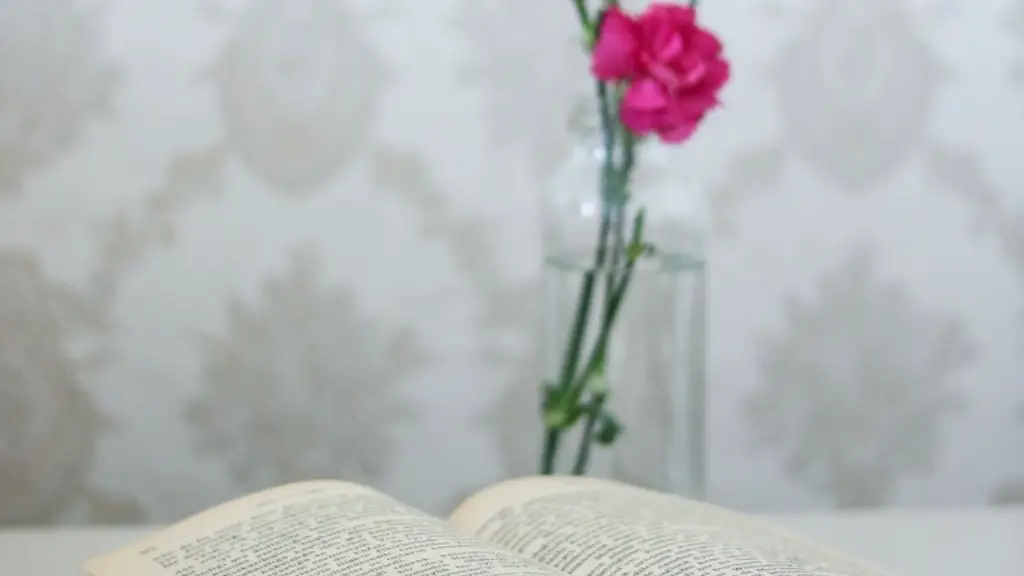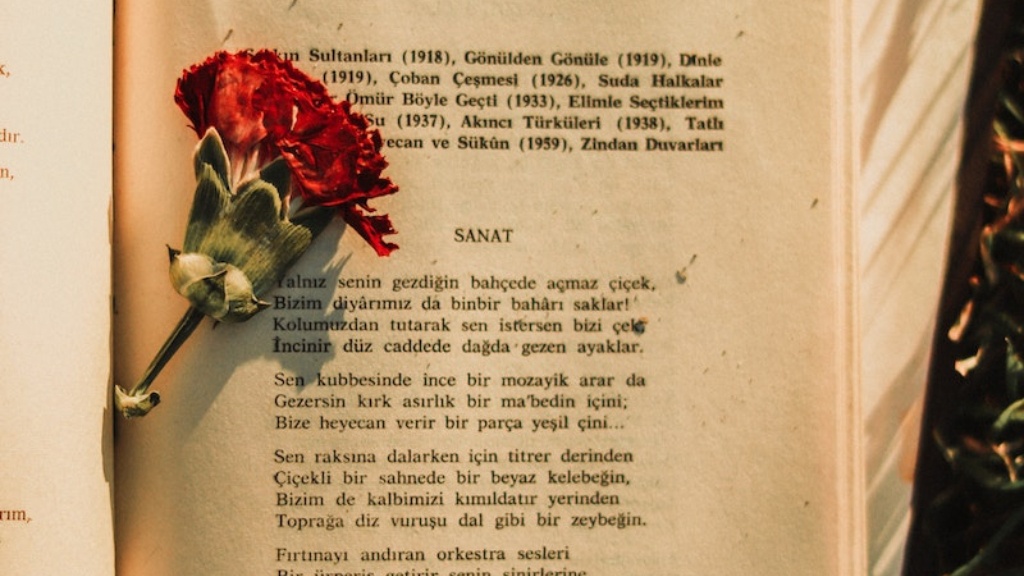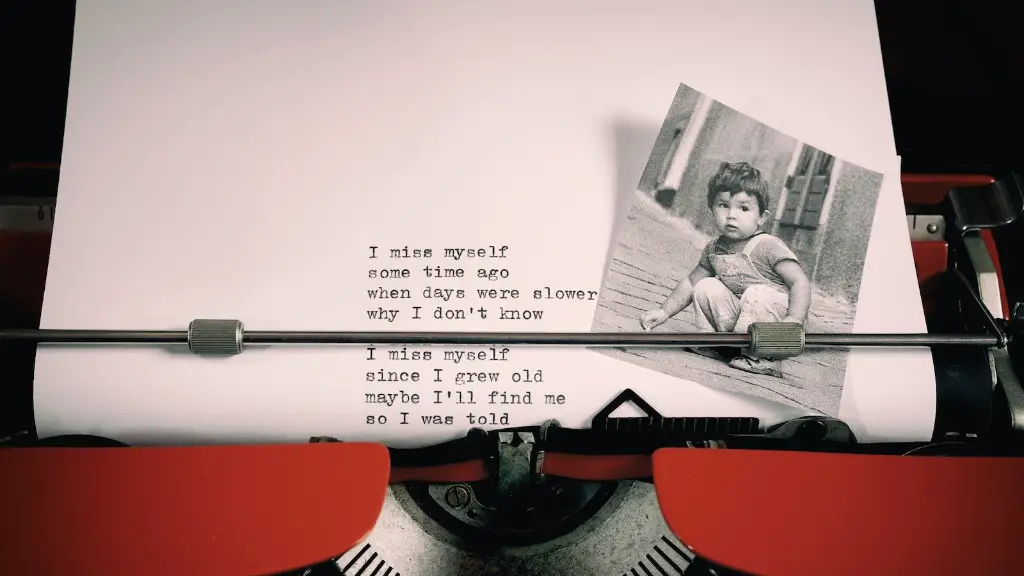Poetry book basics
Poetry books are collections of poems written by an individual author or group of authors. They are usually published by a specialized poetry publisher, although some authors will self-publish their own poetry books. Poetry books vary in size – from a slim pamphlet to an oversized hardbound book. But what is the usual size of a book of poetry with regards to length and pages?
When it comes to the size of a poetry book, there is no single answer. The length and page count of a poetry book will depend on the number of its poems as well as its format. Some poetry books are compiled into thick, large-format volumes or anthologies featuring dozens of poems, while others only contain a single poem or a small selection.
The size of a poetry book is often a reflection of the quantity of the poems contained within. While some poetry books will feature one or a few poems, others may include up to 100 or more poems. If a publisher is offering multiple different editions of the same book, each with a different length, this could indicate the number of pages. For example, a softcover edition of a poetry book may consist of 80 pages, while the hardcover version has 160 pages.
Furthermore, the type of binding and format of the book also affects its size. Generally, stapled bindings are the most common for poetry books, as they are both economical and low-maintenance. They are usually the thinnest and lightest of all bindings, although their pages may not be designed to last very long. Alternatively, perfect bindings and sewn bindings are more secure and may last longer, but these tend to be more expensive and heavier.
Page count of poetry books
The most basic answer to the question of how many pages does a poetry book have is that it depends on its length and binding. Generally, a poetry book can range from something as thin as 10 or 20 pages all the way up to 600 pages and beyond.
Some poetry books will include extra features, such as illustrations or cover art, which may add additional pages. Even if the number of poems stays the same, an illustrated poetry book may have more pages than an unillustrated one.
In general, a thin poetry book with a few poems may have anywhere from 30 to 64 pages, with the average being 48 pages. Medium-sized poetry books tend to have between 80 and 128 pages in length, with the average being 96 pages. Large-format poetry books can range from 128 to 600 pages, with the average being 256 pages.
These numbers are just general guidelines and do not take into account any additional content, illustrations, or binding effects. Furthermore, the length of a poem will also have a significant impact on the page count – a long, wordy poem may take up two or three pages, while a shorter, more concise poem may only take up one page.
Types of poetry books
Poetry books can be divided into two main categories – anthologies and single-author collections. Anthologies are collections of poems from multiple authors with a common theme or subject. Single-author collections feature the work of a single poet and may include several volumes, each with its own range of poems. Single-author poetry books tend to be larger and more comprehensive than anthologies since they represent the body of work of a single poet.
Single-author collections tend to have more pages, as they contain more poems. Furthermore, single-author books are likely to include additional features such as a biography of the author, critical reviews of their work, and other supplementary material. These features tend to add to the page count of a single-author poetry book.
Anthologies tend to be smaller and more concise as they contain only a handful of poems by multiple authors. Anthologies usually focus on a specific theme, such as nature, love, or emotions, and feature a variety of poets from different periods. As anthologies are usually shorter than single-author collections, the page count of an anthology will generally range from 40 to 128 pages.
Poetry book illustrations
Illustrations in poetry books can have a significant impact on their page count as well as the overall experience of reading the poems. Many poetry books will include illustrations of the poems, often in the form of line drawings or engravings that add visual interest and atmosphere to the work. Although illustrations may add some extra pages to a poetry book, they often provide deeper insight into the poet’s work. Moreover, illustrations can lend a unique and creative aspect to a poem, inviting the reader to explore the imagery and meaning of the verse.
Illustrations also make poetry books more appealing to potential buyers. People often prefer illustrated books to plain, unillustrated ones as they feel more visually engaging and can help bring the poets’ work to life. This can lead to increased sales and a wider readership for a particular poetry book.
In short, illustrations can be a great asset for a poetry book, although they may add a few extra pages to its length. As illustrations range from simple sketches to full colour artwork, there is no set number for how many pages a poetry book may have if it contains illustrations.
Price of poetry books
The price of a poetry book can vary widely, depending on its length, binding, and other features such as illustrations. Generally, thick, higher-end volumes of poetry such as anthologies and single-author collections tend to cost more than thin, low-end volumes. Moreover, illustrated poetry books and those with extra features may also be more expensive than their plain counterparts.
For example, a paperback volume of a single-author collection with a stapled binding may cost around $10-15, while a hardcover, sewn-binding version with illustrations could cost up to $50 or more. Smaller, pamphlet collections of poems may cost less than $10, while large-format anthologies may cost upwards of $20.
In addition to the actual cost of the book, readers should factor in shipping fees, if applicable. Some online retailers, publishers, and bookstores offer free shipping for their books, but this is usually limited to certain territories. Furthermore, when ordering from an international retailer or publisher, readers should inquire about any additional fees or taxes that may be incurred, which can add to the cost of the book.
Accessibility of poetry books
While some poetry books may be more expensive than others, there are many ways of acquiring them with less financial impact. Many libraries stock poetry books that can be borrowed at no cost. Some libraries also offer digital copies of books that can be downloaded or read online, allowing readers to access poetry books without having to purchase them. Additionally, many poets and small presses also offer digital copies of poetry books that can be downloaded for free or at a reduced price. This can provide an interesting and economical way of exploring poetry.
In addition to libraries and digital copies, readers can also find poetry books in second-hand stores or through book-swap websites. These are great options for those on a budget, as they allow readers to acquire books at reduced prices or even for free. Furthermore, readers can also purchase new or used copies of books from online retailers such as Amazon and eBay, although this should be done with caution, as some retailers may not have high quality products.
Poetry book reviews
Before buying or reading a poetry book, it can be helpful to read reviews of the book in order to get an idea of what to expect. Reviews by readers and critics can provide an insightful and unbiased view of the book, as they offer an honest account of their experience. Reviews can also provide useful information about the quality of the book’s content and format, as well as any additional features, such as illustrations or translations.
In addition to reading reviews, readers can also discover new poetry books by following the work of authors and poets on social media, or browsing online poetry magazine sites such as Poetry Magazine, which curate and feature a range of interesting new books. This can provide readers with an up-to-date overview of the world of poetry and can help them find books that fit their interests.
Finally, readers can also attend readings and events at bookstores and libraries in order to discover new poetry books and authors. Attending events such as these can be a great opportunity to meet poets, as well as get a feel for the atmosphere of their work.
Conclusion
In conclusion, the size of a poetry book will depend on its length, format, and features. Generally, thin books with a few poems can range from 30 to 64 pages, while medium-sized books tend to have between 80 and 128 pages and large-format books may have up to 600 pages or more. In addition, illustrations can add extra pages to a book, and the price of a book will depend on its length and binding. Finally, readers can acquire books through libraries, online stores, second-hand stores, or events such as readings and bookstores.





